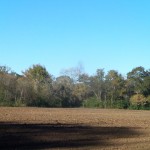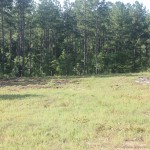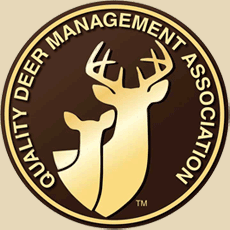When it comes to deer hunting, few things have revolutionized the industry as food plots. Food plots and seeds have become a $702 million dollar industry. A study conducted by the US Fish and Wildlife department showed that in 2006 the average hunter spent less than $2.00 on food plots and plantings. Compare this to the same study conducted in 2011 showed the average hunter spent $51.00 on plots; an increase of 2400% in five years. There is no doubt that food plots help in keeping our herds healthy and provide opportunities to harvest bucks. But to grow a good plot there are some things we all can learn.
It all begins with a plan, and a good plan begins with a simple question: “what do I want to accomplish with my food plots?” The answer to this question can often tell you what and when you need to plant.
According to Kip Adams, a Certified Wildlife Biologist and Director of Education for the Quality Deer Management Association, there are three categories of crops for deer food plots. They are; cool season perennials such as clover, alfalfa, chicory, et. al. Secondly there are cool season annuals. Crops such as wheat, oats and all brassicas fall into this category. And lastly we have the warm season annuals: corn, soy beans, cow peas, etc.
Adams says that of these three, the best early season crops “will contain a combination of the warm season perennials and the cool season annuals.” As Adams puts it; “hunters need to think about feeding deer before, during and after the season.” These combinations will do just that. Starting with a good warm season perennial such as clover, chicory or alfalfa will provide a good food base for your deer. These crops are very popular and with the right fertilizer will provide good food for a long time. But hunters don’t need to stop here. Along with these perennials, plantings of annuals will supplement and compliment these food plots.
While many hunters know deer love soy beans, not as many understand that while the deer love the foliage, they will also eat the seeds and the seed pods. In fact Adams said “the soybean seed pod contains about ten percent more protein than acorns.” Soybeans will give deer food for months. However, if not careful, over grazing will prevent a good stand. This is why, unless you have a lot of acres to plant soy beans in, fencing is a good option. Erect temporary fencing that can be lowered or even removed after the beans reach an appreciable height. This can also be used to funnel deer into your field close to your stands to allow for bow hunters to have a great opportunity.
However, Adams also says, that if you can’t plant soybeans, cow peas is a good alternative. “The deer don’t seem to favor the foliage as much, and this allows them to sprout pods that the deer do prefer.” Either way, planting a warm season annual in early or mid summer will provide a great early season crop. And mixing this with a cool season annual will give your deer good quality food for eight to nine months of the year.
Many hunters however prefer to plant blends when they are preparing their summer plots. To this end there are a variety of methods of doing this. One is to drill directly into your perennial plots. By drilling beans or peas directly into your warm season perennial crop, (clover) this will allow a dual role for your plot and it gives the deer a different piece of protein.
Prior to planting, you will need to spray a good herbicide. As Adams puts it, “there are herbicides that will kill grasses and herbicides that will kill broadleaf’s, blends contain both. So if you spray a herbicide on your planting, you will most likely kill one or more of your plot crops. It’s important to read the directions carefully before applying herbicides to blends. If starting a new plot – spray a strong herbicide that will kill most everything out there, then instead of plowing and planting, simply use a no-till drill to plant. Adams reminds us that seeds can remain dormant for years, and turning the ground will expose those seeds that are dormant and you will have to spray again. It’s better to no-till plant to prevent the dormant seeds from germinating.
Regardless of which crops you choose, remember the key question, “what do you want your plot to do for you?” Answering this question will help you in choosing the best plants, and combination of plants for your particular plot.






